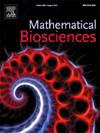感染诱导的宿主灭绝:环境传播病原体的确定性和随机模型。
IF 1.8
4区 数学
Q2 BIOLOGY
引用次数: 0
摘要
两栖动物的减少和灭绝已经在全球范围内观察到,突出了确定潜在因素的紧迫性。这个问题长期以来一直被认为是保护生态学的一个关键问题,并继续受到极大的关注。病原体感染,特别是壶菌壶菌(Batrachochytrium dendroatidis),被认为是导致特定地区某些物种数量下降的关键因素。在本文中,我们着重于识别病原体的特征,可以驱动宿主物种灭绝。提出了基于易感-感染-病原体流行模型的确定性和随机建模框架,以评估病原体感染对物种衰退和灭绝的影响。各种指标,包括宿主物种的繁殖数量,病原体的复制和病原体的传播。理论分析包括确定性模型中平衡的稳定性、宿主物种的灭绝和持久性,以及随机模型中灭绝概率和平均灭绝时间的评估。此外,通过数值模拟量化了各种因素对寄主衰退和灭绝的影响,以及灭绝的概率。我们发现病原体驱动宿主灭绝的两个关键条件:(i)病原体在环境中的自我繁殖能力,以及(ii)病原体对受感染宿主的繁殖力和存活率的影响。这些发现为设计和实施有效的两栖动物保护策略提供了帮助。本文章由计算机程序翻译,如有差异,请以英文原文为准。
Infection-induced host extinction: Deterministic and stochastic models for environmentally transmitted pathogens
Amphibian decline and extinction have been observed on a global scale, highlighting the urgency of identifying the underlying factors. This issue has long been recognized as a critical concern in conservation ecology and continues to receive significant attention. Pathogen infection, in particular the chytrid fungus Batrachochytrium dendrobatidis, is postulated as a key factor contributing to the decline of certain species within specific regions. In this paper, we focus on identifying the pathogen characteristics that can drive host species extinction. Both deterministic and stochastic modeling frameworks based on a susceptible-infectious-pathogen epidemic model are proposed, to assess the influence of pathogen infection on species decline and extinction. Various indices, including the reproduction numbers of the host species, the replication of the pathogen, and the transmission of the pathogen are derived. Theoretical analysis includes the stability of equilibria, the extinction and persistence of host species in the deterministic model, and the evaluation of extinction probability and average extinction time in the stochastic model. Additionally, numerical simulations are conducted to quantify the effects of various factors on host decline and extinction, as well as the probabilities of extinction. We find two crucial conditions for a pathogen to drive host extinction: (i) the pathogen’s self-reproduction capacity in the environment, and (ii) the pathogen’s impact on the fecundity and survival of the infected host. These findings provide insights that could aid in the design and implementation of effective conservation strategies for amphibians.
求助全文
通过发布文献求助,成功后即可免费获取论文全文。
去求助
来源期刊

Mathematical Biosciences
生物-生物学
CiteScore
7.50
自引率
2.30%
发文量
67
审稿时长
18 days
期刊介绍:
Mathematical Biosciences publishes work providing new concepts or new understanding of biological systems using mathematical models, or methodological articles likely to find application to multiple biological systems. Papers are expected to present a major research finding of broad significance for the biological sciences, or mathematical biology. Mathematical Biosciences welcomes original research articles, letters, reviews and perspectives.
 求助内容:
求助内容: 应助结果提醒方式:
应助结果提醒方式:


